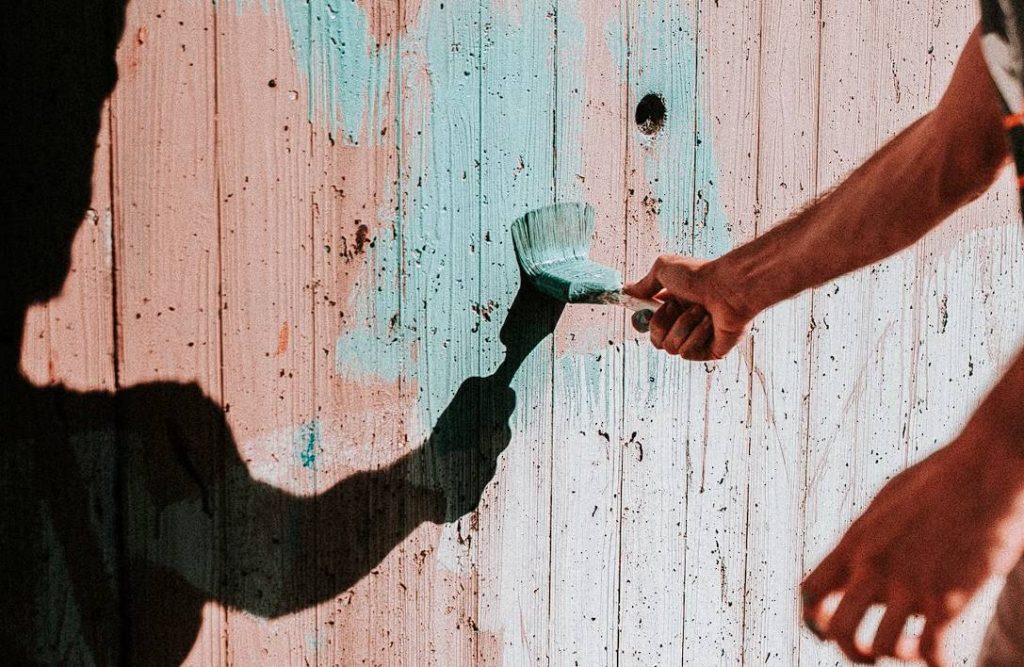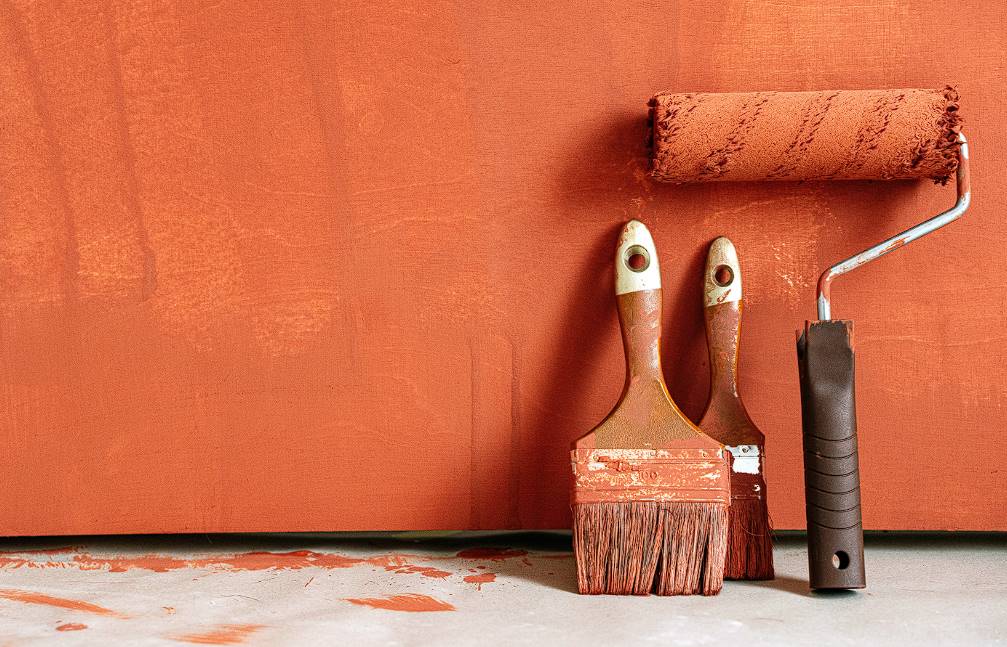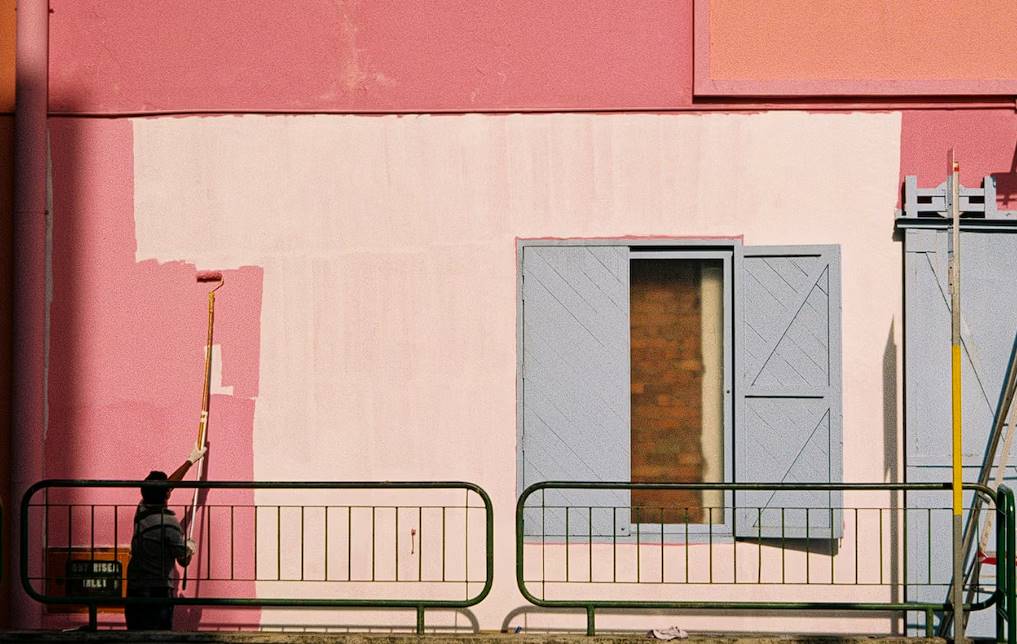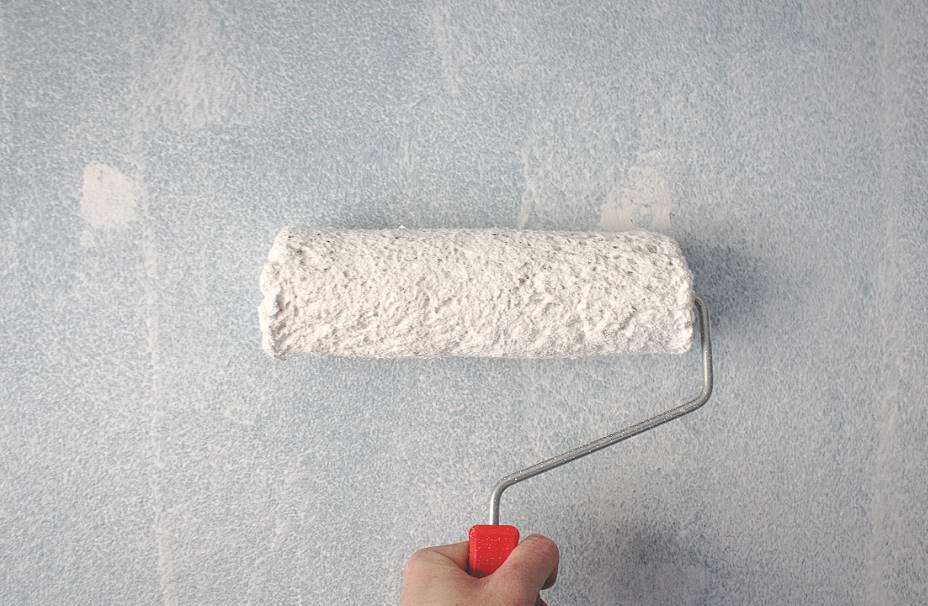Have you ever wished there was a way to improve your home's curb appeal and protect it from the elements simultaneously? The walls can get depth, personality, and longevity using the appropriate texture paint finish. Texture paint finishes are a flexible option that may completely alter a home's appearance, whether for a rustic, contemporary, or opulent style.
The finest paint finishes for exterior walls with texture depend on the design and functionality sought. A sleek and modern look, as provided by smooth surfaces, makes minimalist designs shine. Stippling, sand swirls, and skip trowels are textured treatments that create a livelier appearance while masking flaws. A distinctive and eye-catching facade can be achieved by combining texture paint finishes with the proper colour scheme. The greatest selection for your home can be made with the help of professional advice, so consult with an expert in exterior design.
It might be challenging to decide on the best texture paint finish for your outside walls due to the abundance of alternatives. This in-depth post delves into the fascinating realm of texture paint finishes, discussing their many uses, most common methods, and important caveats. Famous exterior designers who have used novel texture paint finish to remodel homes completely will be discussed. Let's take the plunge together and find the ideal texture paint finish to improve your home's curb appeal.
Remember that the purpose of an introduction is to both introduce the issue and grab the reader's attention. By introducing the topic of the best texture paint finishes for external walls, we may pique the reader's interest and encourage them to keep reading to gain a thorough understanding of this intriguing topic.
How Does Textured Paint Benefit Exterior Walls?
The use of textured paint on exterior walls has many benefits. There are aesthetic and functional gains from this addition to the surface. Walls with a textured finish are deceptively simple since the coating can hide flaws like fractures and unevenness. The use of textured paint on exterior walls has many advantages:
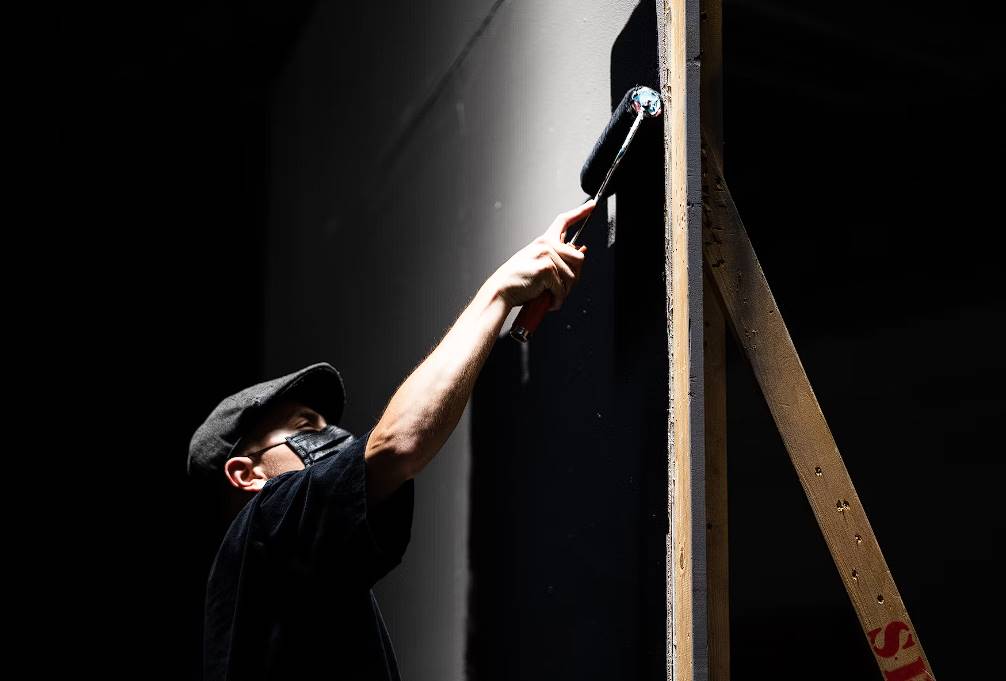
Aesthetics
The outside walls of a building can be improved by using textured paint to create visual interest and depth. It's versatile enough to simulate a variety of materials and styles, from rough stone to a stucco-like finish. The texture disguises surface flaws, making the walls look smoother and nicer.
Conceals Surface Flaws
Surface irregularities, such as cracks and dents, are common on exterior walls. Because the paint's texture helps to hide imperfections, it's a great choice for covering them up. Rather than investing in costly wall repairs or preparation, textured paint might provide a more economical alternative.
Durability
The weatherproofing and longevity of textured paints are intentional design choices. It's an added safeguard against the elements and UV radiation that keeps the exterior walls looking great for longer. Water-related problems, such as dampness and mould growth, can be mitigated because of the texture's ability to repel moisture.
Improved Grip and Traction
Depending on the texture used, textured paint can improve traction and grip on exterior walls. This is especially helpful around pools and other sources of water or slippery environments, such as decks and stairways. The increased traction and decreased slipperiness brought about by the new texture should help reduce the number of incidents.
Low Maintenance
Unlike smooth surfaces, textured paint requires little upkeep. The walls will maintain their pristine appearance for longer because of the texture's ability to conceal dust, filth, and small stains. It's also easy to fix small areas of damage or wear over time without repainting the whole surface.
Sound Absorption
Paint with a textured surface helps absorb ambient noise, making your home more peaceful. The texture's irregular surface can block sound waves, resulting in a quieter, more pleasant environment inside the building.
Increased Resale Value
Applying textured paint to a home's external walls improves its visual appeal and market value. The building's resale or rental value may increase thanks to the improvements made to its visual appeal and other perks like those listed above.
Types Of Paint: Exterior And Interior Paints
Picking the right paint is just as crucial as picking the right shade. More so. It's important to choose the right paint for the right surface. The appearance of the painted space will be drastically altered depending on the colour you use.
Whether you're painting an indoor or exterior space, the surface's material, the desired aesthetic, and other factors need to be considered before you start painting. If you want to ensure you pick the right paint, sealer, and primer for your project, read on.
Interior paints
A wide range of hues, finishes, and sheens are available indoors. The paint's shine is determined by how much light it reflects. Think about how often you'll wash, scrap, or hit the area you're painting with heavy furniture.
Whitewash
Slaked lime and powdered chalk are combined to create a solution known as a whitewash. Whitewashing is a cheap and easy way to brighten interior walls and ceilings without exposing yourself or your family to harmful chemicals. Brick, concrete, drywall, wood, and even furniture can all benefit from its versatility.
On the other hand, whitewash is not painting and hence lacks a consistent hue. Surfaces can be brightened with its help. If the surface isn't white, it won't be able to hide the previous colour.
Matte paint
Paint with a flat, matte finish is the standard for usage on interior walls and ceilings. It has a dull, non-reflective hue and a coarse, granular surface. It works wonderfully on surfaces where you want to minimise reflections and glare. The paint can also conceal wall flaws.
Affordable and simple to use, matte paint is a popular choice. A roller or brush will work just well for this. When covering a solid colour, multiple coats of paint are usually necessary. Matte paint must be touched up often throughout the years but is readily cleaned with a moist cloth.
Flat enamel paint
Flat enamel paint is similar in appearance to matte paint, but it lasts much longer and is much more durable. The paint is flat and non-reflective, but it is also quite easy to clean, even if it gets scratched or stained. It's a great option if you have kids, dogs, or a lot of foot traffic. It's ideal for spaces where you frequently wipe the walls, such as kitchens and bathrooms.
Eggshell paint
Paints with an eggshell sheen are designed to mimic the appearance of a real eggshell. The gloss level is lower than that of satin paint but higher than that of matte paint. The paint has a subtle sheen to create a timeless, glossy finish. Many homes' living rooms, dining rooms, and bedrooms (but not their kitchens or bathrooms) are painted with this paint. The paint is versatile enough to be used on wooden doors and furniture.
This paint is not only inexpensive, but it also dries quickly and leaves behind a minimal scent. The subtle shine makes it easier to clean than matte paint, but there are better choices for locations where many people or pets will be walking or playing.
Satin paint
When comparing eggshell and satin paint finishes, the latter is glossier. The sheen is somewhere in between a matte and glossy finish. Because it can withstand repeated washings and cleanings, satin paint is an excellent option for heavily used rooms.
The paint is versatile enough for any interior surface, including wood furniture, doors, walls, and ceilings. However, the glossy finish will highlight any flaws in the surface. Thus, it's not suggested for usage in such cases.
Semi-gloss paint
Semi-gloss paint has a more pronounced sheen than satin or eggshell paint. The reflectivity of semi-gloss paint ranges from 40-70%. Painting with a semi-gloss sheen makes cleanup a breeze. When light is reflected from the surface, it provides a shine that is not blinding. Stain and abrasion resistance are added benefits of the paint.
Due to its excellent endurance, semi-gloss paint can be used indoors and outdoors. Due to this paint's high sheen, any surface flaws will be more noticeable. Think about this before deciding to utilise it.
Gloss paint
Gloss paint is a popular alternative to matte paint for decorating the inside of a home. The paint can be used indoors or outdoors and works well on wood. Be cautious when applying paint so that it covers the surface evenly. The best-looking effects typically require more than one or two coats of paint. Like other glossy paints, it has the potential to accentuate flaws. Another drawback is that fingerprints and other stains appear quite clearly on surfaces painted with this paint, so they must be cleaned frequently.
Exterior paints
Cement paint
Paint designed specifically for use on cement surfaces, cement paint, is typically utilised in outdoor settings. Its true composition is a powder cement and paint pigment blend. There is a limited range of colours to choose from.
We're talking dirt cheap paint here. The paint is less long-lasting or sturdy than others due to its water-based composition. The hue usually remains for at least a few years. The paint comes as a powder that needs to be mixed with water and then constantly stirred while being used. It's important to put the paint to work as soon as feasible. More than two hours of storage time can cause rock hardness.
- Pro tip: To get the greatest results, consider where and what kind of surface you'll paint, then invest in high-quality brushes and rollers.
Bituminous paint
Bituminous paint, or asphalt, has another name. The inks are black, tacky and have a hybrid consistency of liquid and solid. The paint suits exterior surfaces such as steel, iron, structural metal fabrications, and concrete. It is also effective as an insulating layer beneath tiled roofs. Guttering, plumbing, fencing, and railings are all suitable applications. The paint is tough, long lasting, and impervious to water. It shields painted areas from the elements, fading from the sun's rays, and damage from the chemicals used in building.
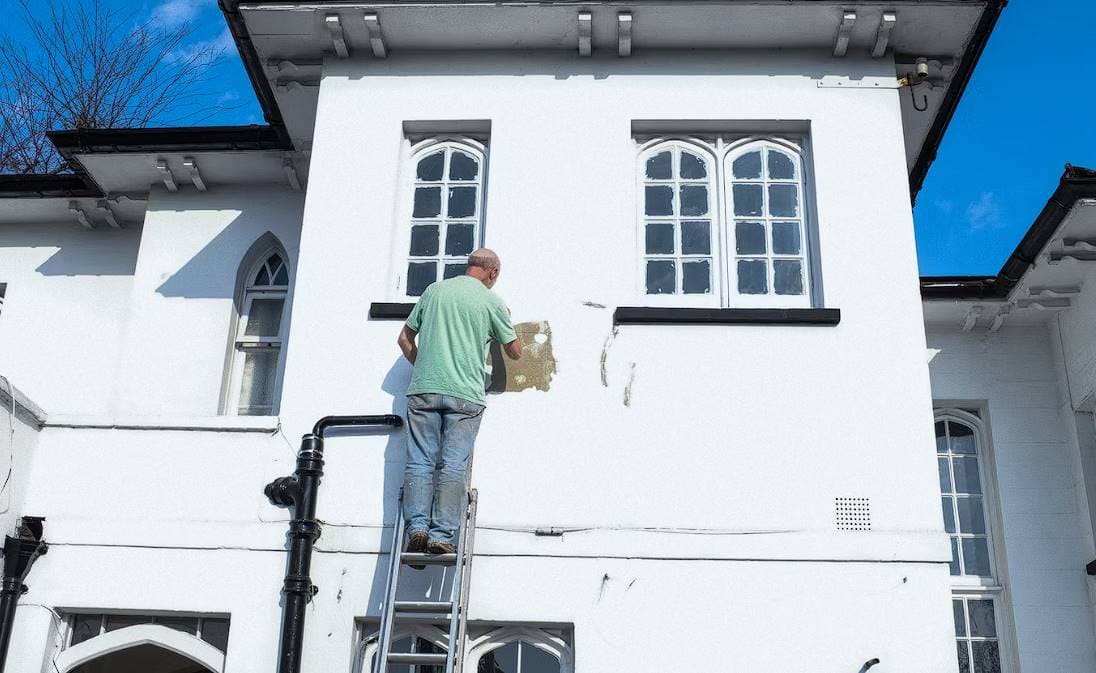
What Should You Consider When Buying Texture Paint?
A few considerations must be made before beginning a job that involves texture paint. The surface and the paint type you choose will significantly impact the final result.
You must choose the best texture paint for your project from the many available colours and sheens. Ensure the substrate, or the surface you'll be painting on, is appropriate for the texture paint you intend to use. Paints might vary in their suitability for use on smooth versus textured surfaces. It's also essential to consider the paint's application method, as some surfaces are better suited to spraying than others.
Texture paints can be purchased in various finishes, including smooth, coarse, gritty, and stucco-like, depending on the desired effect. Pick a paint that can help you get the desired texture by thinking about what texture you want to create.
Conclusion
The finest paint finishes for outdoor walls with texture rely on the desired aesthetic and practicality. Stippling, sand swirls, and skip trowels give a surface a livelier appearance while hiding imperfections, whereas smooth surfaces give a clean, modern image. To make the right choice for your house, you should consult an expert. Renowned architects and exterior designers have incorporated new texture paint finishes in home renovations. Exterior walls painted with a textured finish look great, last longer, are easier to walk on, are quieter, and sell for more money.
It can fool the eye into thinking it's something else entirely, and it's great at covering up defects in the finish. Improved traction and grip can help in wet or slick areas, such as around pools or other water features, while durability provides further protection from the elements and UV radiation. Sound absorption can prevent annoying outside noise from filtering inside, and its low maintenance requirements mean fewer hours spent fixing things. Applying textured paint to the exterior walls of a home might raise its resale value.
Content Summary
- Texture paint finishes can enhance the curb appeal of your home's exterior walls.
- They offer depth, personality, and longevity to the walls.
- Texture paint finishes can transform your home's appearance, whether rustic, contemporary, or opulent.
- Smooth surfaces provide a sleek and modern look, ideal for minimalist designs.
- Stippling, sand swirls, and skip trowels create textured treatments for a livelier appearance.
- Texture paint finishes can mask flaws on the walls, such as fractures and unevenness.
- The right texture paint finish combined with the proper color scheme can create a distinctive and eye-catching facade.
- Seeking professional advice can help you make the best selection for your home's exterior design.
- Choosing the best texture paint finish for exterior walls can be challenging due to the abundance of options.
- This comprehensive post explores the world of texture paint finishes, including their uses and methods.
- It discusses famous exterior designers who have used texture paint finishes to remodel homes.
- The use of textured paint on exterior walls offers both aesthetic and functional benefits.
- Textured finishes create visual interest and depth, simulating various materials and styles.
- Texture paint disguises surface flaws, making walls look smoother and more attractive.
- Textured paint can provide an economical alternative to costly wall repairs or preparation.
- It offers durability and weatherproofing, protecting exterior walls from the elements and UV radiation.
- Textured paint can improve grip and traction on exterior walls, enhancing safety around water or slippery environments.
- Maintenance for textured paint is minimal compared to smooth surfaces, as it conceals dust, filth, and stains.
- Textured paint helps absorb ambient noise, creating a more peaceful environment indoors.
- Applying textured paint to external walls can increase the resale value of a building.
- When choosing paint for interior walls, factors such as material, desired aesthetic, and usage should be considered.
- Whitewash is a versatile and inexpensive solution for brightening interior walls and ceilings.
- Matte paint with a flat, non-reflective hue is suitable for minimizing reflections and concealing wall flaws.
- Flat enamel paint offers increased durability and is easy to clean, making it ideal for high-traffic areas.
- Eggshell paint provides a subtle sheen and is commonly used in living rooms, dining rooms, and bedrooms.
- Satin paint offers a glossier finish and is resistant to repeated washings, making it suitable for heavily used rooms.
- Semi-gloss paint has a more pronounced sheen and provides stain and abrasion resistance.
- Gloss paint is popular for decorating the interior of a home and can be used indoors or outdoors.
- Cement paint is specifically designed for cement surfaces, offering an affordable option with limited color choices.
- Considerations when buying texture paint include the suitability for the surface, color selection, and application method.
Frequently Asked Questions
When selecting a texture paint finish for your exterior walls, consider the following factors:
- Architectural style: Choose a finish that complements the architectural style of your building.
- Personal preference: Select a texture that aligns with your aesthetic taste and desired visual effect.
- Climate considerations: Consider the weather conditions in your area. Opt for finishes that provide adequate protection against rain, wind, sun, or extreme temperatures.
- Maintenance: Evaluate the level of maintenance required for each texture finish and choose one that fits your lifestyle and available resources.
- Compatibility: Ensure that the texture paint finish is compatible with the type of wall surface and any existing coatings.
The lifespan of a texture paint finish on exterior walls depends on various factors, including the quality of the paint, surface preparation, application technique, and environmental conditions. On average, a well-maintained texture paint finish can last anywhere from 5 to 15 years or more. Regular cleaning, touch-ups, and periodic inspections can help extend its longevity.
Yes, you can combine different texture paint finishes to create unique effects or accentuate specific areas of your exterior walls. For example, you might use a sand texture finish on the main wall surfaces and a trowel texture finish on architectural details or focal points. Mixing textures can add depth and visual interest to the overall design.
The cost of applying texture paint finishes on exterior walls can vary depending on factors such as the size of the area, the complexity of the texture, the quality of the paint, and local labor rates. It's advisable to obtain quotes from professional painters or contractors to get a better estimate for your specific project.
Texture paint finishes offer several advantages, including:
- Aesthetic appeal: They add depth, dimension, and visual interest to the exterior walls, giving them a unique and stylish appearance.
- Concealing imperfections: Texture paint finishes help hide minor surface flaws, cracks, or unevenness on the walls.
- Durability: These finishes provide an additional layer of protection against harsh weather conditions, UV rays, moisture, and other external elements.
- Low maintenance: Texture paints are relatively easy to clean and maintain, reducing the need for frequent repainting.
- Longevity: When properly applied and maintained, texture paint finishes can have a long lifespan, ensuring the exterior walls look good for an extended period.
